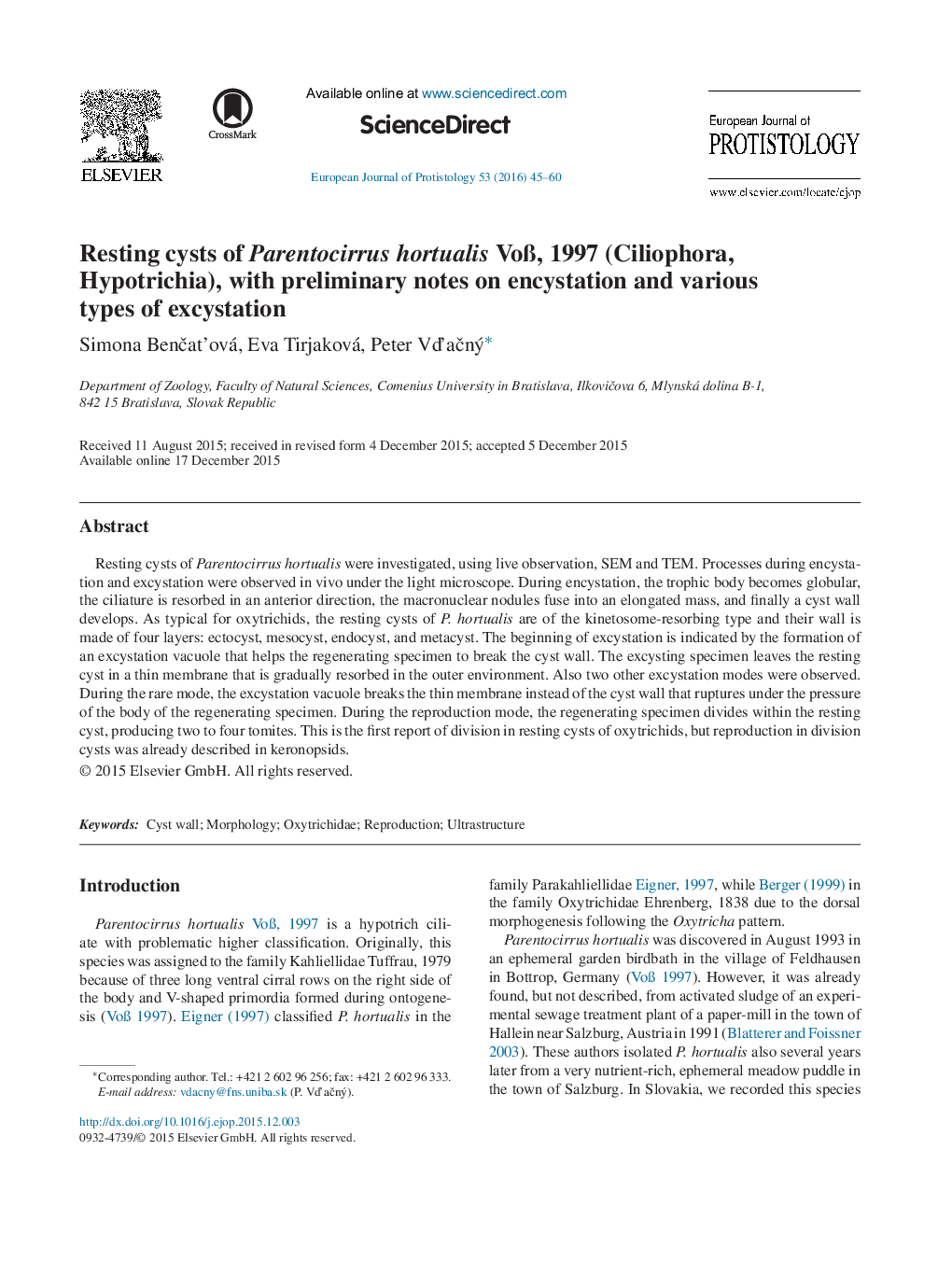| Article ID | Journal | Published Year | Pages | File Type |
|---|---|---|---|---|
| 2046986 | European Journal of Protistology | 2016 | 16 Pages |
Abstract
Resting cysts of Parentocirrus hortualis were investigated, using live observation, SEM and TEM. Processes during encystation and excystation were observed in vivo under the light microscope. During encystation, the trophic body becomes globular, the ciliature is resorbed in an anterior direction, the macronuclear nodules fuse into an elongated mass, and finally a cyst wall develops. As typical for oxytrichids, the resting cysts of P. hortualis are of the kinetosome-resorbing type and their wall is made of four layers: ectocyst, mesocyst, endocyst, and metacyst. The beginning of excystation is indicated by the formation of an excystation vacuole that helps the regenerating specimen to break the cyst wall. The excysting specimen leaves the resting cyst in a thin membrane that is gradually resorbed in the outer environment. Also two other excystation modes were observed. During the rare mode, the excystation vacuole breaks the thin membrane instead of the cyst wall that ruptures under the pressure of the body of the regenerating specimen. During the reproduction mode, the regenerating specimen divides within the resting cyst, producing two to four tomites. This is the first report of division in resting cysts of oxytrichids, but reproduction in division cysts was already described in keronopsids.
Related Topics
Life Sciences
Agricultural and Biological Sciences
Agricultural and Biological Sciences (General)
Authors
Simona BenÄaÅ¥ová, Eva Tirjaková, Peter VÄaÄný,
